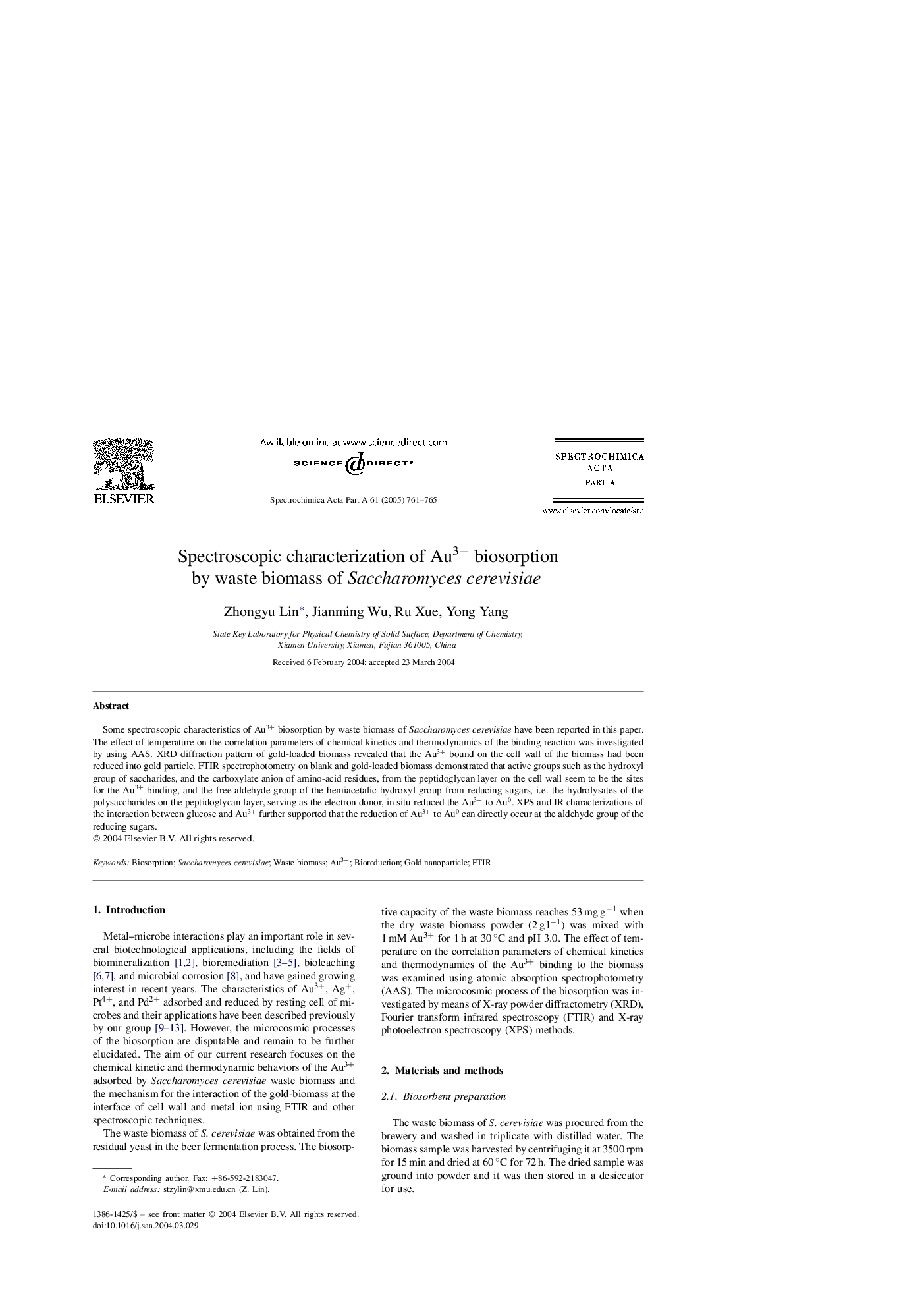| Article ID | Journal | Published Year | Pages | File Type |
|---|---|---|---|---|
| 10557520 | Spectrochimica Acta Part A: Molecular and Biomolecular Spectroscopy | 2005 | 5 Pages |
Abstract
Some spectroscopic characteristics of Au3+ biosorption by waste biomass of Saccharomyces cerevisiae have been reported in this paper. The effect of temperature on the correlation parameters of chemical kinetics and thermodynamics of the binding reaction was investigated by using AAS. XRD diffraction pattern of gold-loaded biomass revealed that the Au3+ bound on the cell wall of the biomass had been reduced into gold particle. FTIR spectrophotometry on blank and gold-loaded biomass demonstrated that active groups such as the hydroxyl group of saccharides, and the carboxylate anion of amino-acid residues, from the peptidoglycan layer on the cell wall seem to be the sites for the Au3+ binding, and the free aldehyde group of the hemiacetalic hydroxyl group from reducing sugars, i.e. the hydrolysates of the polysaccharides on the peptidoglycan layer, serving as the electron donor, in situ reduced the Au3+ to Au0. XPS and IR characterizations of the interaction between glucose and Au3+ further supported that the reduction of Au3+ to Au0 can directly occur at the aldehyde group of the reducing sugars.
Related Topics
Physical Sciences and Engineering
Chemistry
Analytical Chemistry
Authors
Zhongyu Lin, Jianming Wu, Ru Xue, Yong Yang,
